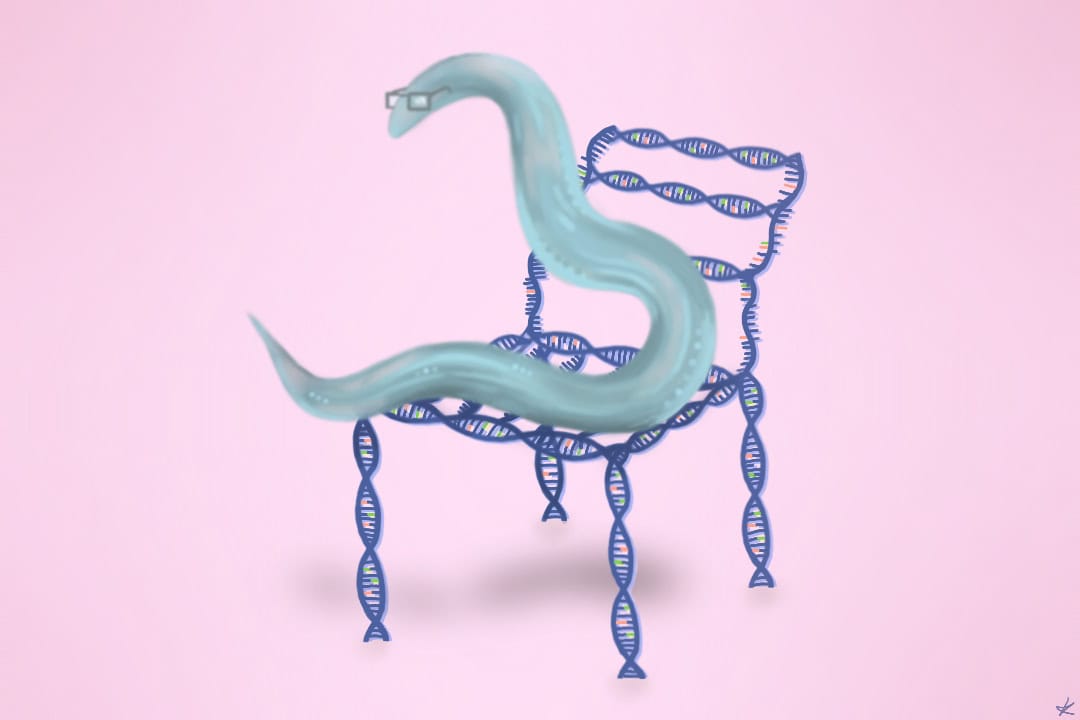Genes are the parts of our DNA that contain the instructions to make the proteins our body needs to keep running. For a human gene to carry out its function, it must first be converted into messenger RNA (mRNA) through a process called transcription. The mRNA contains a message about how the protein is to be translated, so that specific cells can carry out their functions. The flow of information from DNA to RNA to protein is known as the central dogma of molecular biology.
The intriguing question is that if all of our cells share the same DNA, what makes the difference between things like brain cells and heart muscle cells? Furthermore, how do cells know when and where to develop in the body, so the heart muscle cells do not end up in the brain? There must be some mechanisms that ensure specific sets of genes are expressed in corresponding cell types at the right times. This is known as gene regulation.
A discovery using mutants of C. elegans
This year, developmental biologist Victor Ambros and molecular biologist Gary Ruvkun are the Nobel Prize winners in Physiology or Medicine for their discovery of how one such mechanism depends on microRNAs. These tiny molecules, different from the mRNA involved in the central dogma, function by binding to specific mRNAs to block their translation into proteins. Since microRNAs act after mRNAs have been made in the cell, they belong to post-transcriptional regulation.
The duo first discovered this mechanism in Caenorhabditis elegans (C. elegans), a roundworm widely used in molecular genetics and developmental biology due to its coordination of specialized and evolutionarily conserved cell types such as the nerve, muscle, and gut cells. C. elegans is only one millimetre long with a 100 million base pair genome. For reference, the human genome has about three billion base pairs.
They independently investigated two previously discovered C. elegans mutants — lin-4 and lin-14 — which had developmental defects. Ambros showed that the function of lin-14 gene was somehow inhibited by the lin-4 gene, which seemed to function only through a short mRNA molecule. Ruvkun showed that the inhibition by the lin-4 gene happened after transcription. Together, the two laureates discovered a new process regulating gene expression mediated by microRNA that targeted a specific segment in lin-14 mRNA.
Over 1,000 microRNAs have now been found
The scientific community received their findings with caution after the initial publication. Previously, it was thought that proteins were the true effectors of cell functions — including gene regulation — which was carried out by a specific type of proteins called transcription factors. It was not until the discovery of another type of microRNA in animals that people started to recognize the significance of this gene regulation mechanism. The new discovery — the let-7 gene — shows that microRNAs are not a peculiarity in C. elegans, but rather a regulation mechanism common to all animals, including humans.
Today, many groups of researchers have found over 1,000 different microRNAs in humans. These molecules orchestrate complex gene networks by fine-tuning the expression of multiple genes with far-reaching biological and medical significance across multicellular organisms.
Ambros and Ruvkun’s work has reshaped our understanding of cellular machinery for gene regulation and opened new avenues for the treatment of many congenital disorders that are present from birth and cancers.



No comments to display.